How to Add Magnesium to Soil: 8 Great Ideas
-
Pete Ortiz
- Last updated:
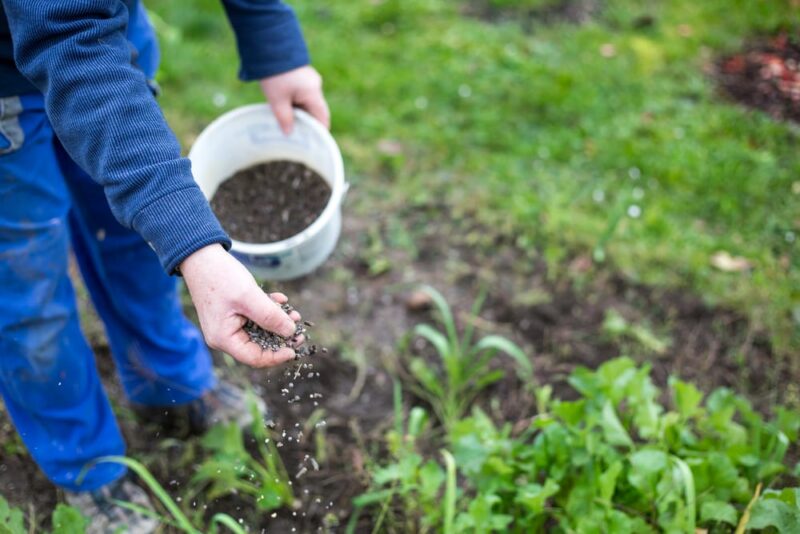
Soil contains many nutrients that plants need to flourish. They include nitrogen, potassium, phosphorus, sulfur, magnesium, and calcium. Most of these nutrients become deficient in the soil as they get used up by plants. Magnesium is no exception.
Magnesium is an essential secondary macronutrient for plant growth, but it’s often overlooked because it’s not as easy to find as other nutrients like nitrogen, potassium, and phosphorus. It doesn’t have an established place in the nutrient trio of N-P-K. N-P-K, which stands for Nitrogen, Phosphorus, and Potassium.
But it is just as crucial for plants as other nutrients in the soil. If the soil in your garden is magnesium-deficient, your plants will show signs of deficiency. To prevent this from happening, you need to add magnesium to your soil so that your plants continue thriving.
This article discusses effective ways for adding magnesium to the soil, benefits of the nutrient and how to tell that it is missing in your soil.
The 8 Great Ideas for Adding Magnesium to Soil
The two types of amendments for adding magnesium:
Organic Amendments
1. Add Compost to the Soil Every Year
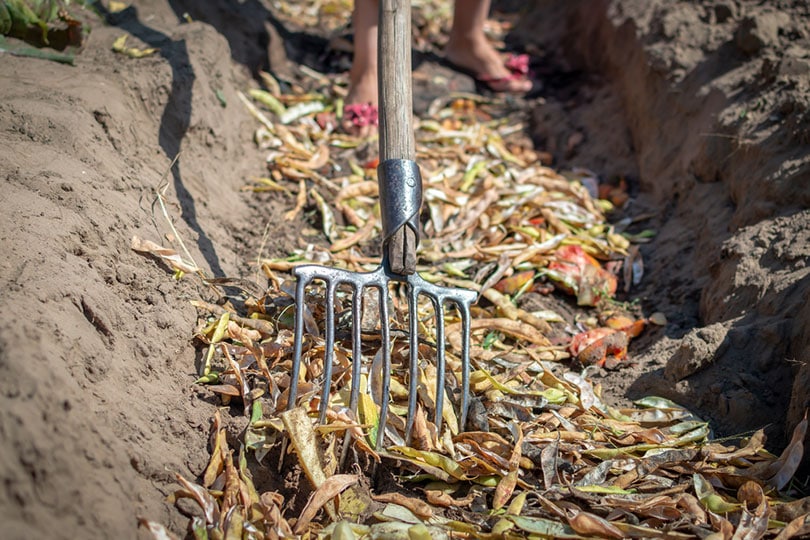
Compost is made from organic matter such as dead leaves, grass clippings, manure, and plant waste. When these materials decompose, they release nutrients into the soil, magnesium being one of them.
Chemical fertilizers only provide nitrogen, phosphorus, and potassium, yet your plants need other nutrients like magnesium.
Compost improves the soil by providing nutrients, aerating it, and preventing erosion. It also adds beneficial microbes that help plants grow better. It also helps you cut down on your need for fertilizer. Spread one or two inches of compost into three to five inches of topsoil. You can also put a handful of compost in every hole during the planting season.
- Adds other essential nutrients to the soil besides magnesium
- Controls the soil pH
- Regulates moisture
- Improves soil texture
- Preparing compost needs space
- Has an odor
2. Raise the Soil pH Level
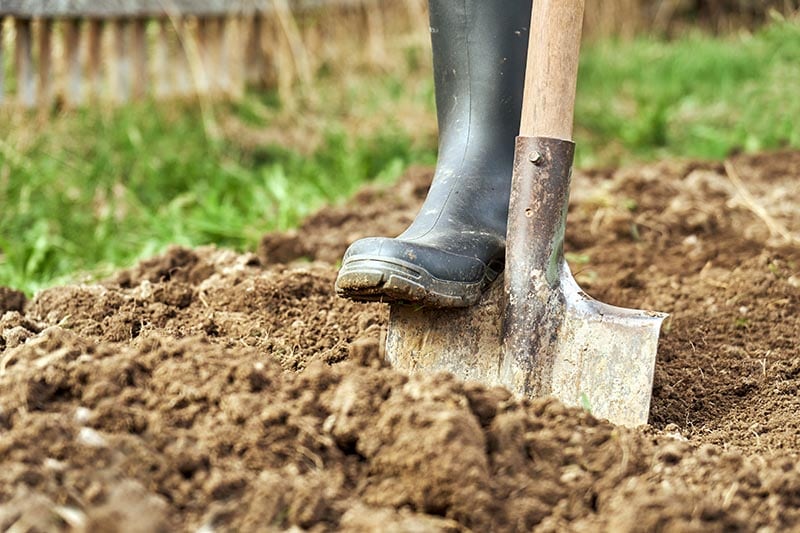
The soil pH level is how acidic or alkaline the soil is. Soil that’s too acidic can affect the availability of magnesium. On the flip side, soil that’s too alkaline can hinder the availability of other nutrients like nitrogen and phosphorus.
Low magnesium levels go hand in hand with low pH levels. So, raising your soil pH level goes with adding magnesium to the soil. You can manage soil pH levels using wood ash and oyster shells.
Oyster shells work gradually. They’re perfect if you want to adjust the soil pH level slightly. Apply wood ash or oyster shells for a couple of months. That means you must apply them several times to adjust the soil pH level and increase the magnesium in the soil.
- It maintains nutrients in the soil
- Plants thrive well in soil with a well-balanced pH level
- Low soil pH affects crucial soil biological functions, such as nitrogen fixation.
3. Apply a Layer of Poultry Manure

Poultry manure is an excellent source of magnesium and nitrogen. It’s easy to apply and has almost no odor. You can apply it at any time during the growing season by working it into the soil to a depth of at least six inches.
The best thing about poultry manure is that its nutrients are balanced. It has nitrogen, potassium, magnesium, and more. It has an almost similar percentage of each of these nutrients. None is higher than the other.
However, don’t apply it directly to the plants. Usually, poultry manure is hot, and the nitrogen in it will burn your plants rather than help them
Apply a layer of it on top of your garden bed, then till it into the soil before planting.
- Eco-friendly
- Provides the soil with all essential nutrients
- Must pass through the composting process before applying to the soil
4. Add Some Soybean Meal
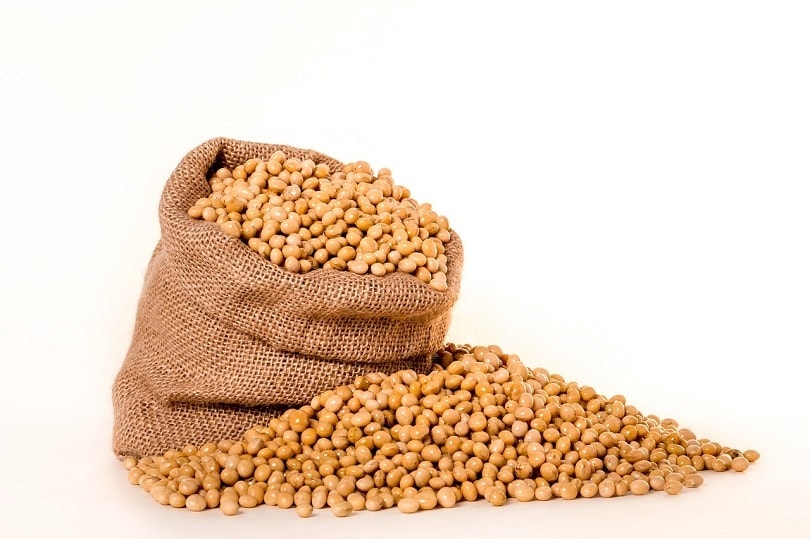
Soybean meal is a byproduct of soybean oil production. It is the substance that remains after grinding and squeezing oil from soybeans. It’s rich in magnesium, phosphorus, potassium, and protein.
The soybean meal is an excellent source of soil enrichment for plants that like acidic soil. It improves the soil’s structure and water-holding capacity.
The best time to add it is in the spring. It will help prevent the leaching of nutrients from the soil during heavy rains that occur in the summer months. You can also apply it several weeks before planting. This way, microbes will break down slowly into harmless forms.
The only problem with soybean meal is that it contains more potassium than magnesium. So, be careful. Use it only when your soil needs a potassium boost.
- Releases nutrients into the soil slowly
- Insoluble in water, doesn’t pollute water bodies
- Ideal for soil that also lacks nitrogen
- Can burn plants if you apply too much of it
Inorganic Amendments
5. Apply Dolomitic Limestone
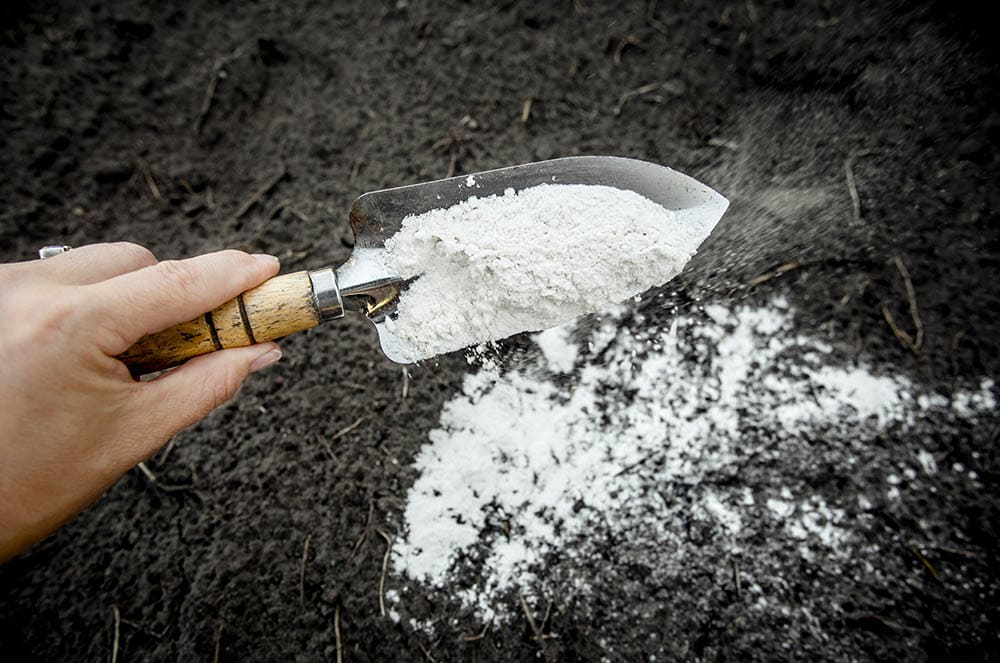
Dolomitic limestone contains calcium and magnesium at 23% and 18% each. It’s also called calcium magnesium carbonate. It’s used as a soil amendment because it improves the structure of the soil such that it drains more efficiently. This type of limestone is available at most garden centers and nurseries.
Use it as a top dressing around plants rather than digging into the soil because it can compact over time if buried too deeply. You can also apply dolomitic limestone with other fertilizers.
But before adding dolomitic limestone, carry out a soil test to check the soil pH and nutrient content. A soil test tells you if there’s a magnesium deficiency in the soil. After that, mix dolomitic limestone extensively six inches into the topsoil. The best time to do all this is before planting.
- Raises the soil pH effectively
- Corrects magnesium-deficient soil
- Applying where it’s not needed causes more harm than good
6. Add Epsom Salt (Magnesium Sulfate) to the Soil
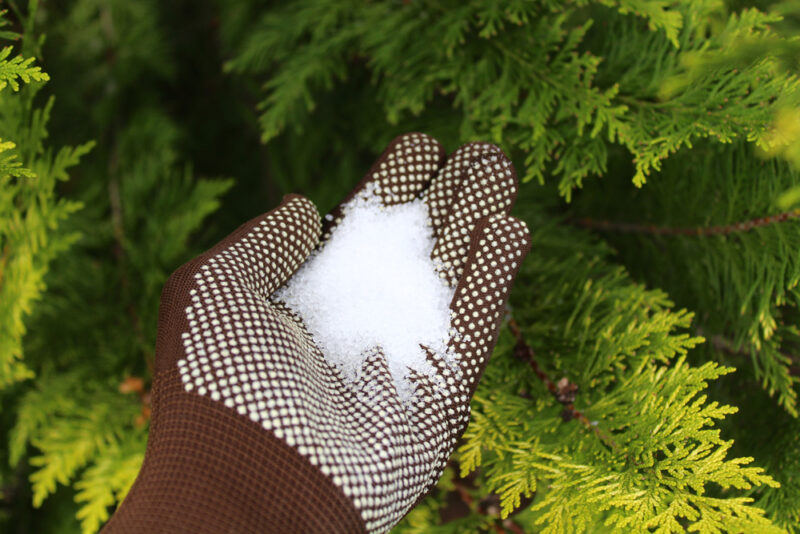
Epsom salt is a type of magnesium sulfate with a high concentration of magnesium and sulfur. These two elements are vital for plant growth. So, adding Epsom salt to your soil will help your plants thrive. But applying too much of it at once can harm your plants if there is too much salt in the soil.
You can use Epsom salt by mixing it with water and applying it directly to your plants’ roots. Besides, you can add it directly into the soil where your plants grow. The easiest way to add it is through foliar spraying. You can also use it with a solution containing one tablespoon per gallon of water.
The best thing about Epsom salt is that it increases magnesium in the soil without changing the soil pH. If you carry out a soil test and find that the pH level is ideal, Epsom salt is the best bet. It also increases the plants’ chlorophyll production.
- Discourages pests such as voles and slugs
- Helps seeds germinate in the soil
- Boosts the soil’s magnesium levels
- Can harm plants and the soil if you add it to the soil that already has magnesium
7. Apply Chemical Leaf Spray
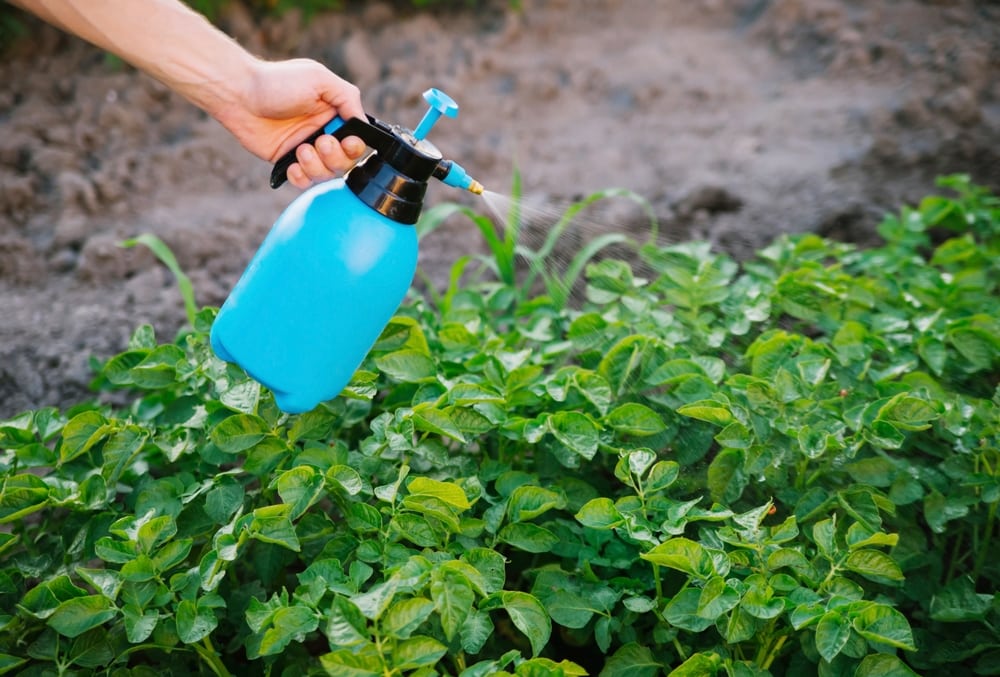
Another way to add magnesium to soil is using a chemical leaf spray. It has several advantages over other methods. One of them is that it’s easy to apply. Spray on leaves or dilute and spray on the soil. You can also apply it at any time during the growing season. It doesn’t have to be done before planting or at specific times during growth like many other fertilizers.
A foliar spray (leaf spray) can be beneficial when added at the proper time during plant growth. They are most effective if applied when leaves are actively growing, such as shortly after emergence. You can also apply them during periods of rapid growth for many plants.
Mix 10 to 15 pounds leaf spray in 100 gallons of water. Then, spray this solution on the plants’ leaves early in the morning making sure to saturate them with the solution.
- It doesn’t burn your plants’ leaves like other sprays
- Adds magnesium to plants and soil faster than other methods
- The magnesium boost doesn’t last long
8. Apply a Fertilizer That Has Magnesium (Sulfate of Potash Magnesia)
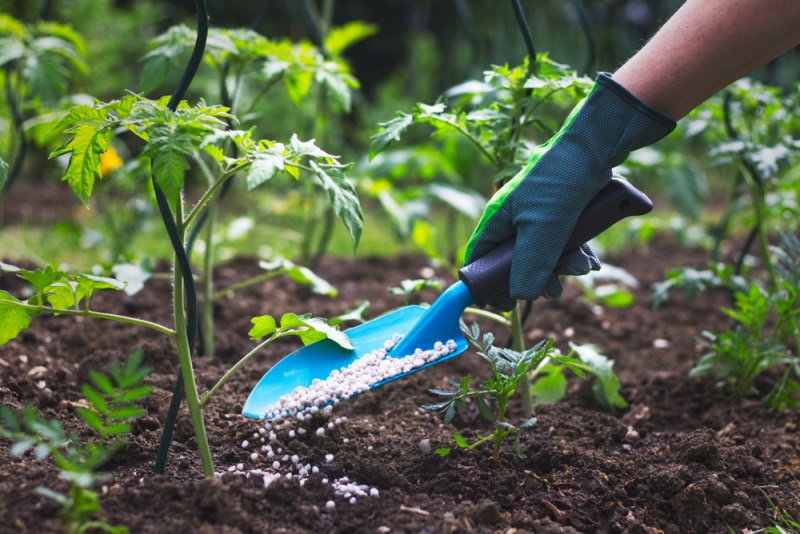
An easy way to supplement your soil with magnesium is using a fertilizer that contains this nutrient. The sulfate of Potash Magnesia is also called K-Mag or Sul-Po-Mag. It contains 10.8% magnesium, 21.5% potassium, and 22% sulfur.
It’s crucial to remember that magnesium is a trace element. So, don’t over-apply it. The recommended amount of magnesium per acre is 25 to 30 pounds per year. You can accomplish this by using a fertilizer with magnesium sulfate (MgSO4).
Spread or broadcast this fertilizer to the soil. Then, water the soil well after application. But, only use it if your soil analysis shows your soil is magnesium-deficient. If your soil is not magnesium-deficient, this fertilizer can cause problems. It’ll draw moisture from the plants and make them wilt.
- Improves crop yield
- Helps increase the soil pH
- Absorbed into the soil easily
- Breaks down in the soil completely
- Putting too much can damage the soil and plants in it
- Toxic and can cause harm to humans
Importance of Magnesium in the Soil
Magnesium is an essential nutrient for plants. It is needed for the formation of chlorophyll and other plant processes like protein synthesis.
Besides, magnesium plays a role in plant nutrition. It activates enzymes in the plant’s cells that are involved with different functions such as photosynthesis and respiration. It can also reduce plant stress caused by cold temperatures, drought, or excess soil moisture.
This mineral also improves the texture and structure of the soil, aiding in better drainage. Many plants, such as blueberry bushes and rhododendrons, need it to thrive!
The availability of magnesium varies throughout the growing season due to changes in the weather and growing conditions. For example, when irrigation water leaches through the soil during a hot summer day, plants need more magnesium than they can get from the soil.
Causes and Signs of Magnesium Deficiency in the Soil
Magnesium deficiency is rare under natural conditions, but it can occur following prolonged leaching of magnesium from the soil. The deficiency can also be caused by excessive irrigation. Besides, it can take place when the soil becomes waterlogged and doesn’t dry out between irrigations.
Magnesium deficiency symptoms include yellowing leaves, stunted growth, and reduced seed yield. Since it aids in the formation of chlorophyll, its deficiency results in chlorosis (yellowing) of older leaves while new leaves remain pale green or white. You can see it when plants are grown under stressful conditions.
In some cases, magnesium deficiency may be accompanied by calcium deficiency. It’s because both nutrients compete for uptake. Magnesium deficiency can also occur if there’s a high calcium or potassium level in the soil.
Conclusion
Magnesium is an essential micronutrient needed by plants, and its deficiency can cause many problems for your garden soil and landscape plants.
There are many great ways to add magnesium to the soil. Which one is for you? The answer will ultimately depend on where you live and which strategies are feasible for your situation. The good news is that there’s something out there for every gardener.
Experiment with a few different methods to determine which works best in your garden. You’ll enjoy growing the healthiest plants possible!
Featured Image Credit: Simon Kadula, Shutterstock
Contents



